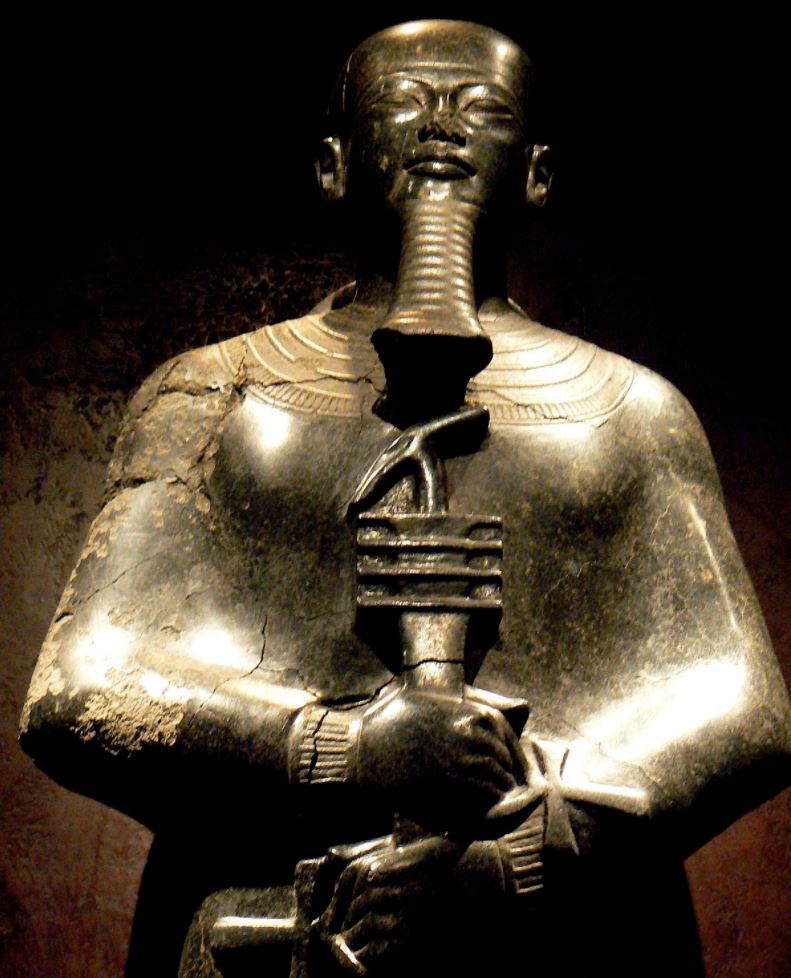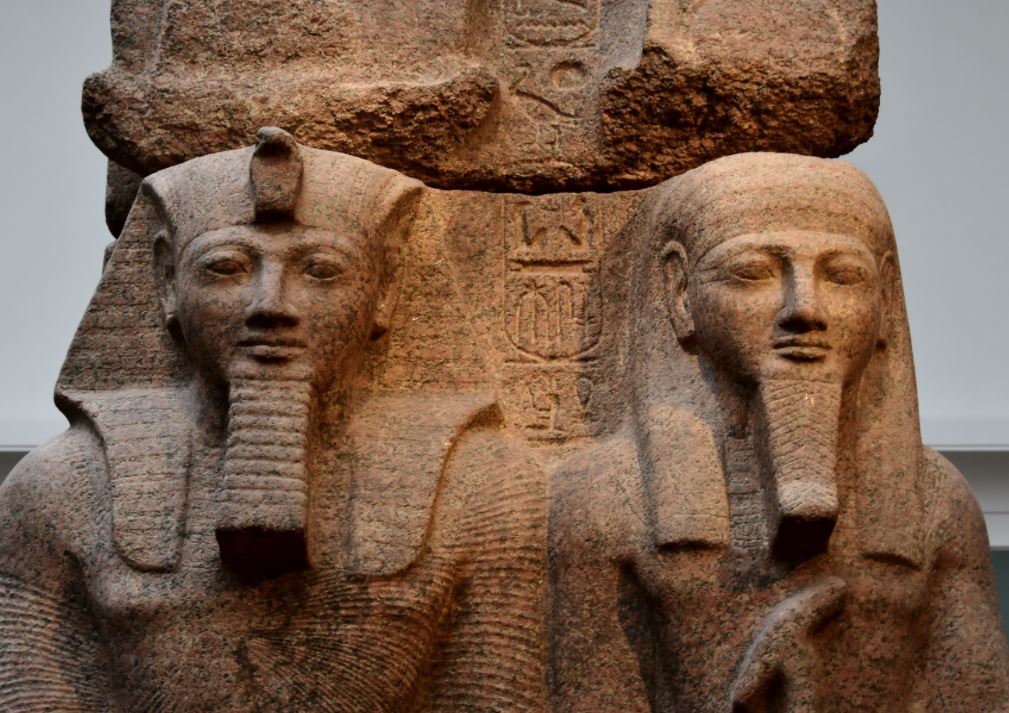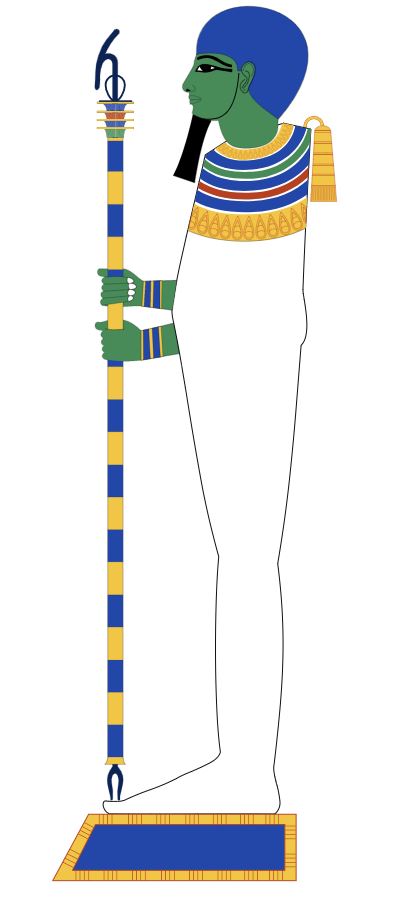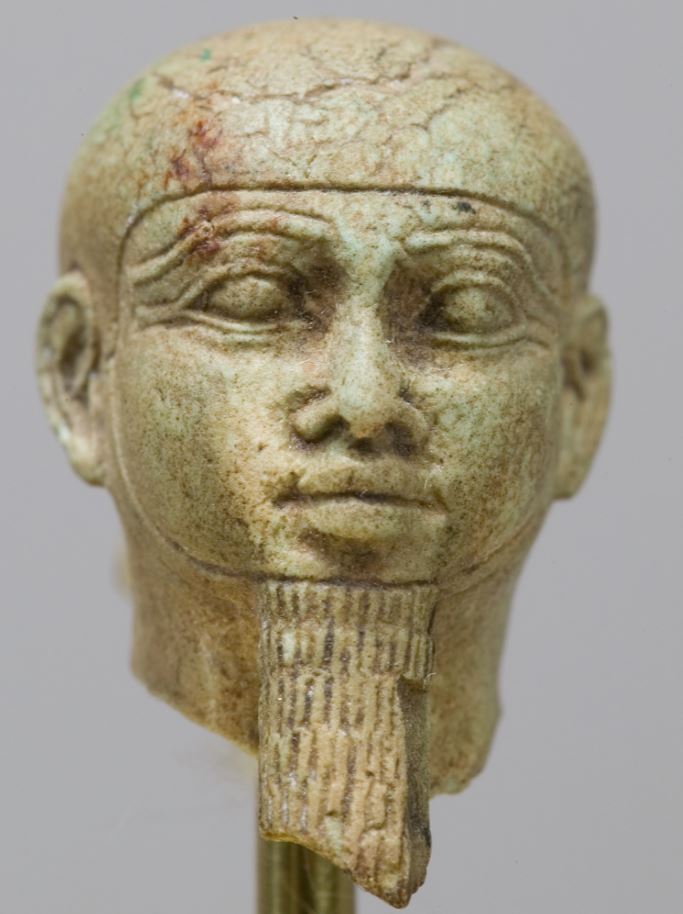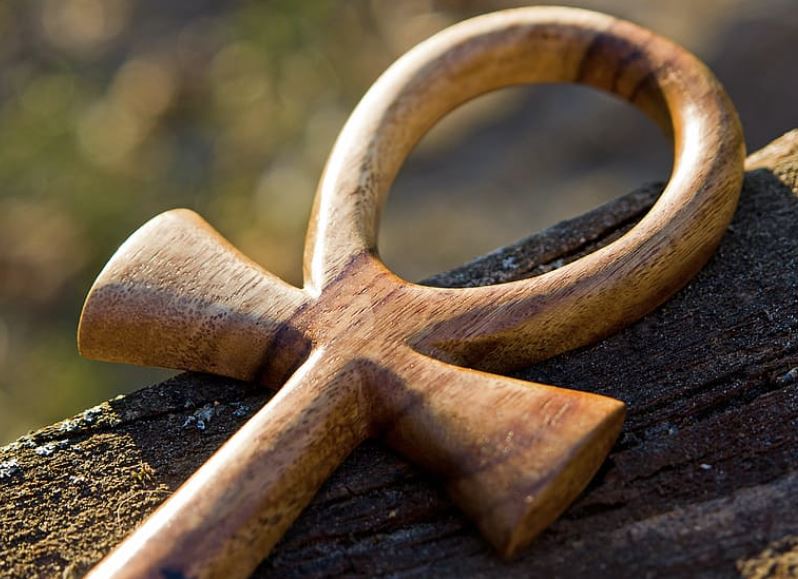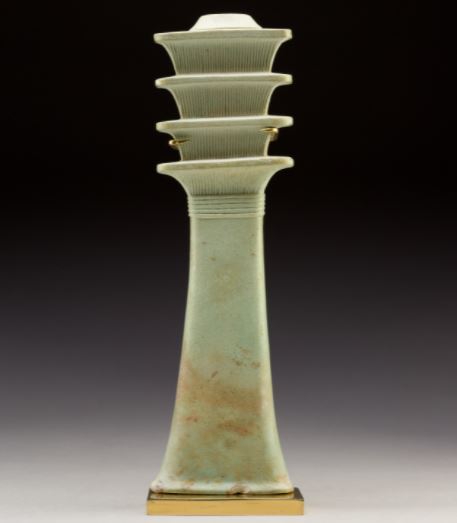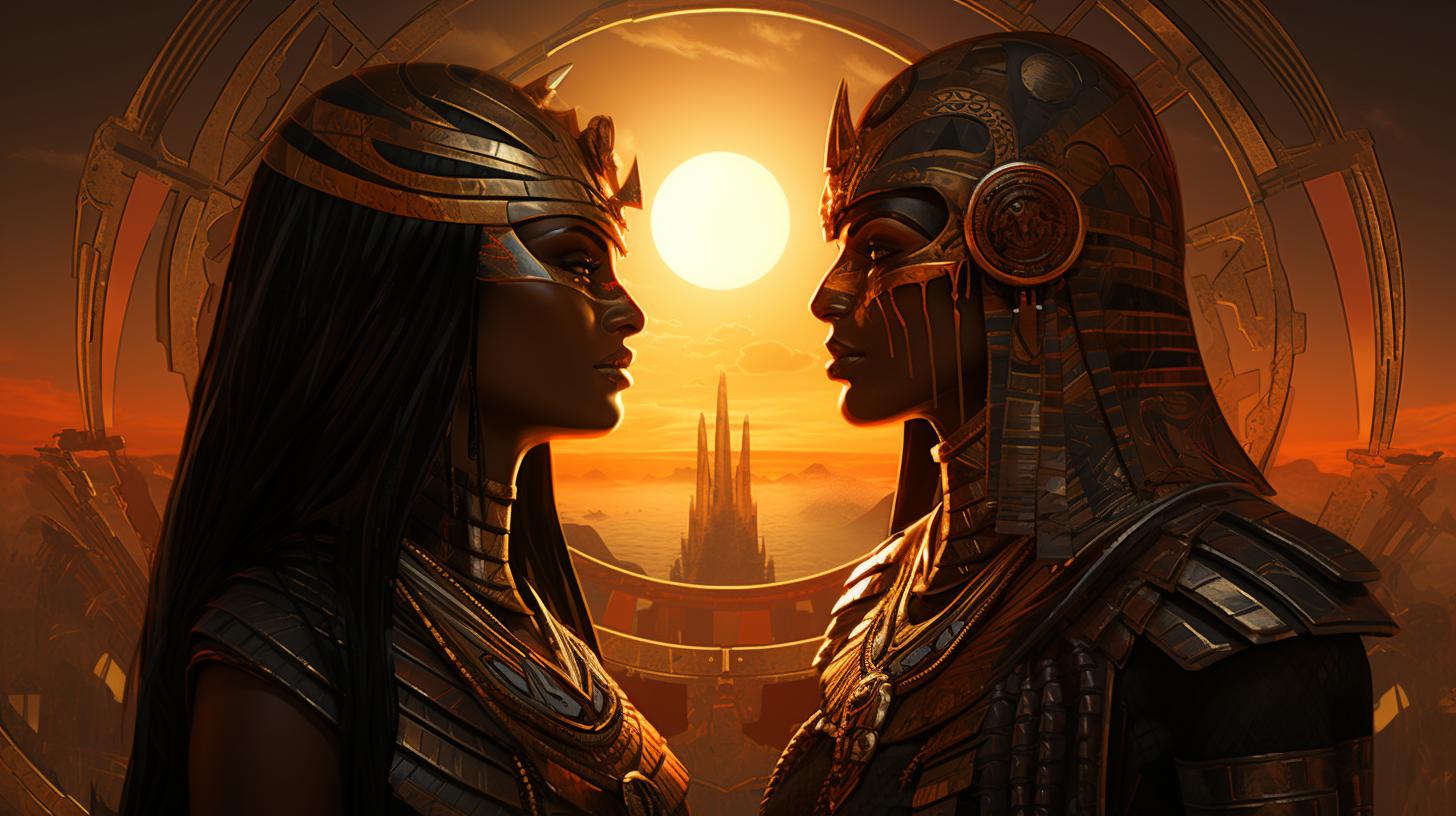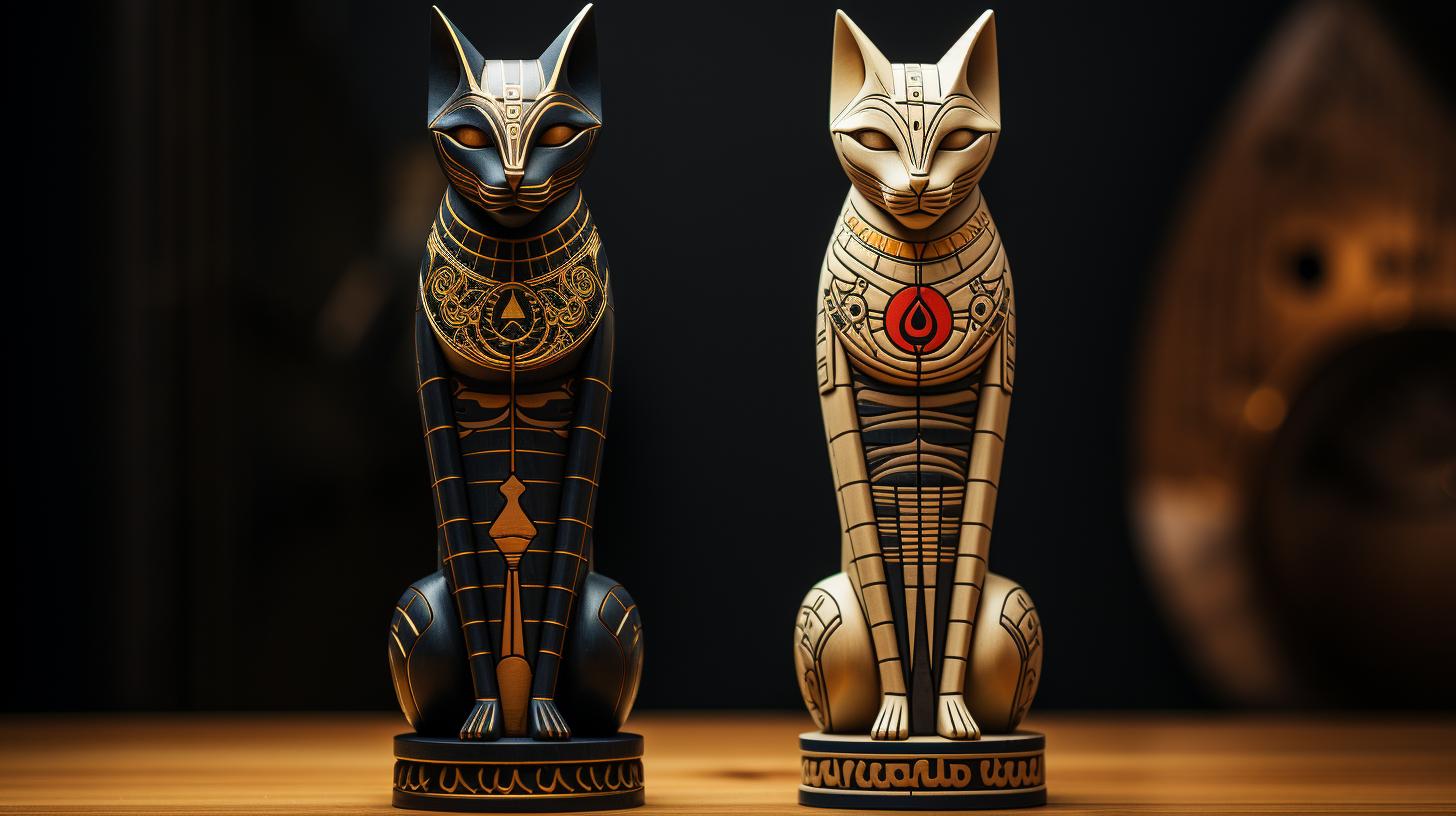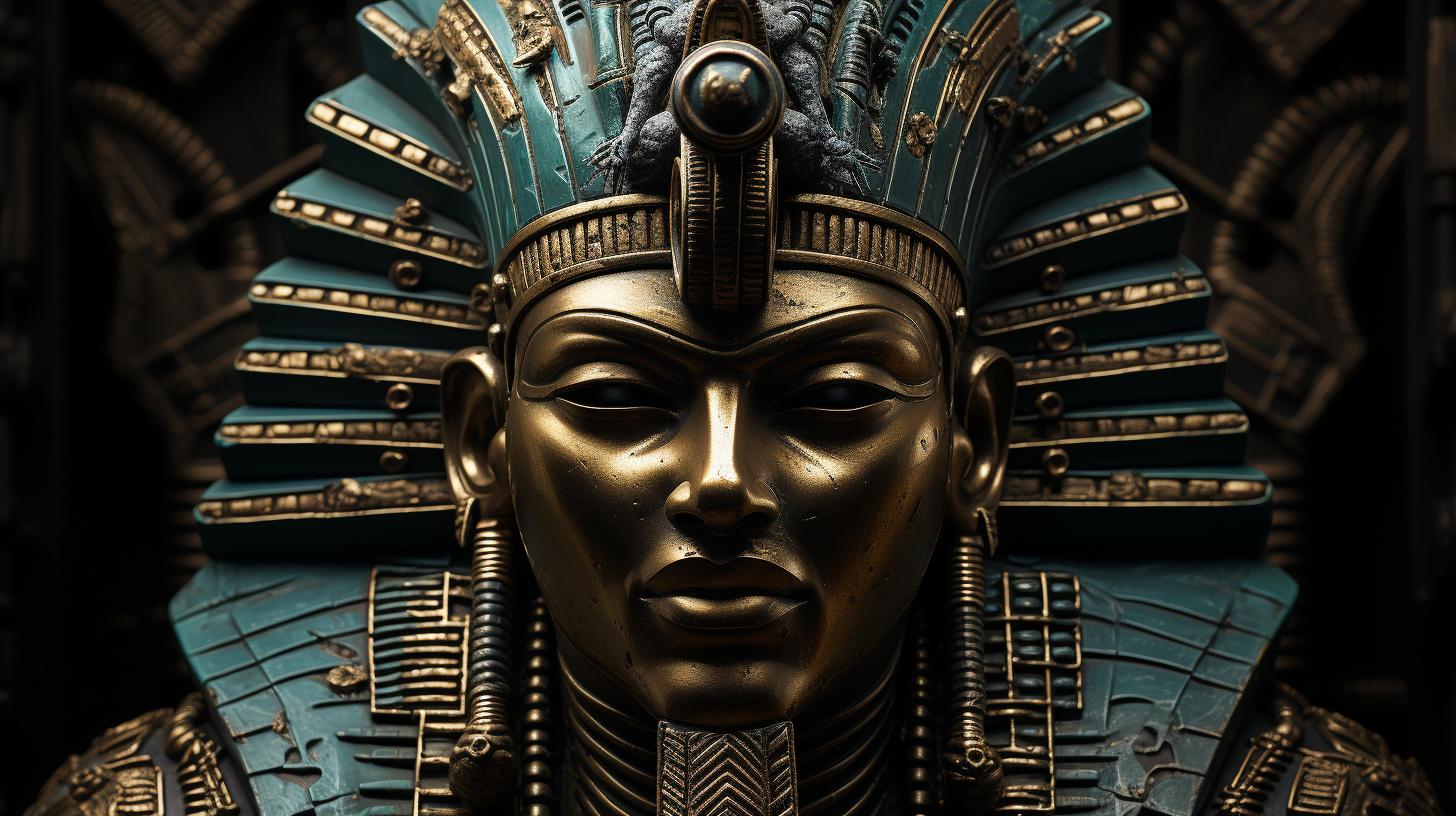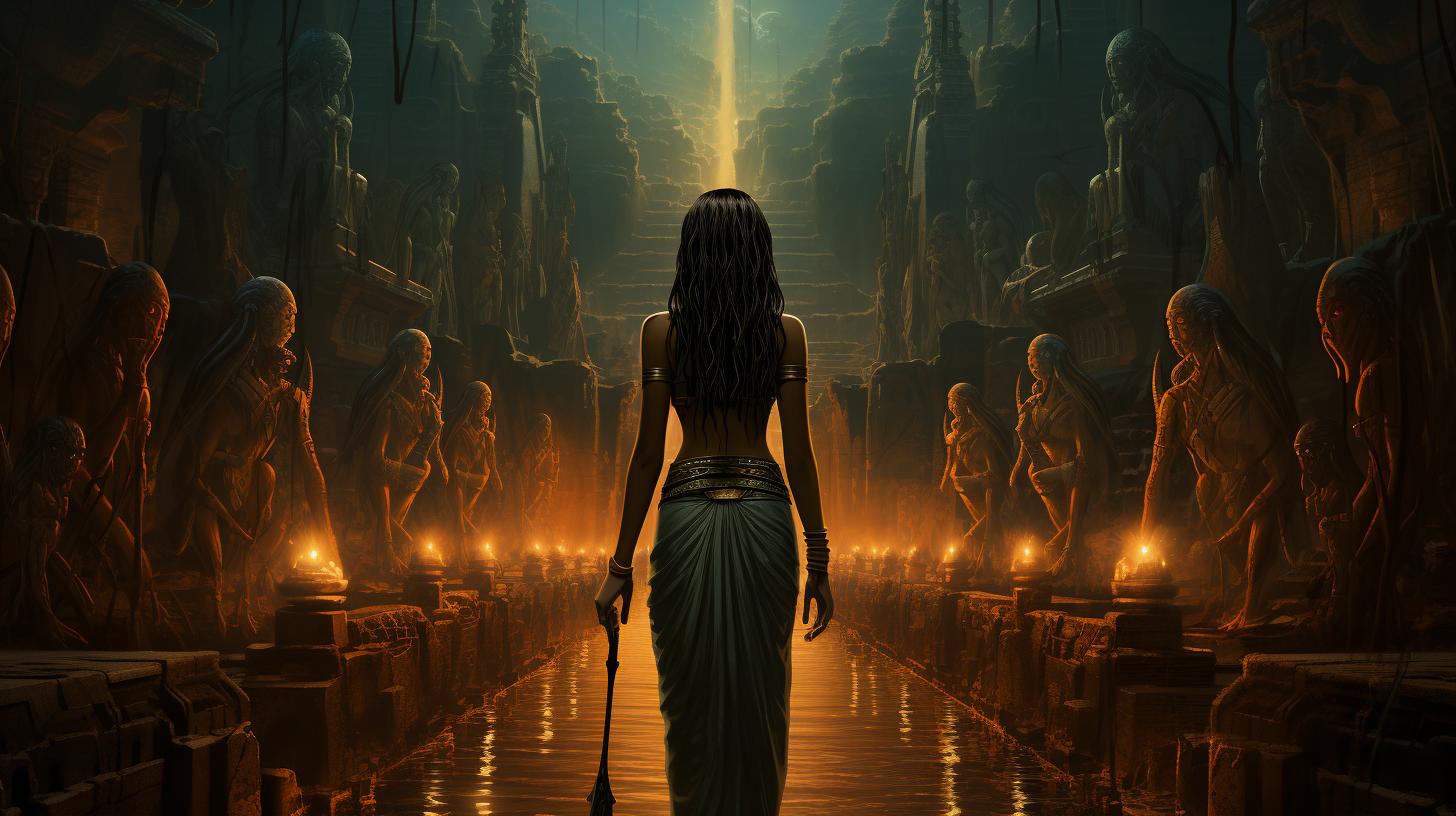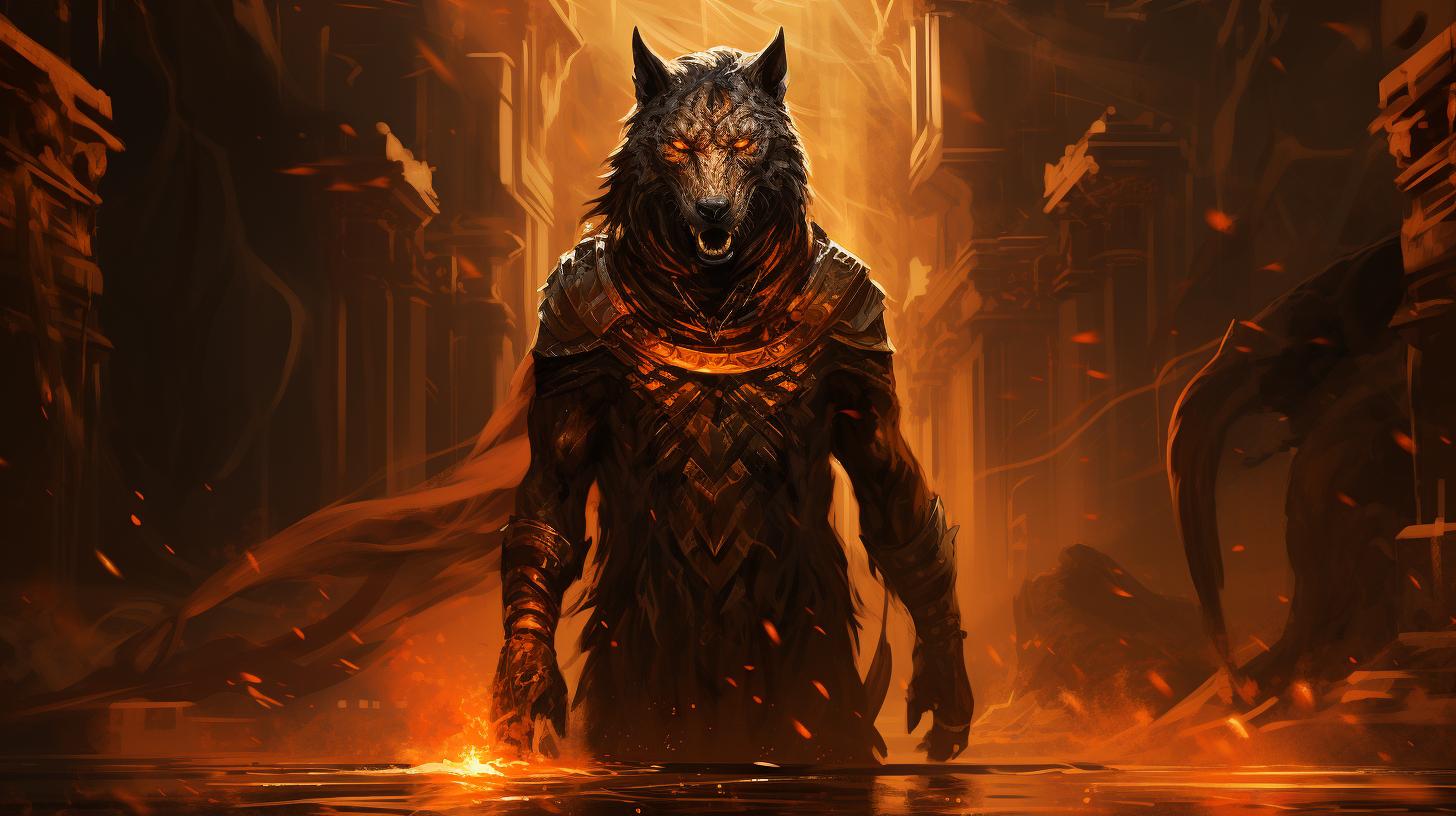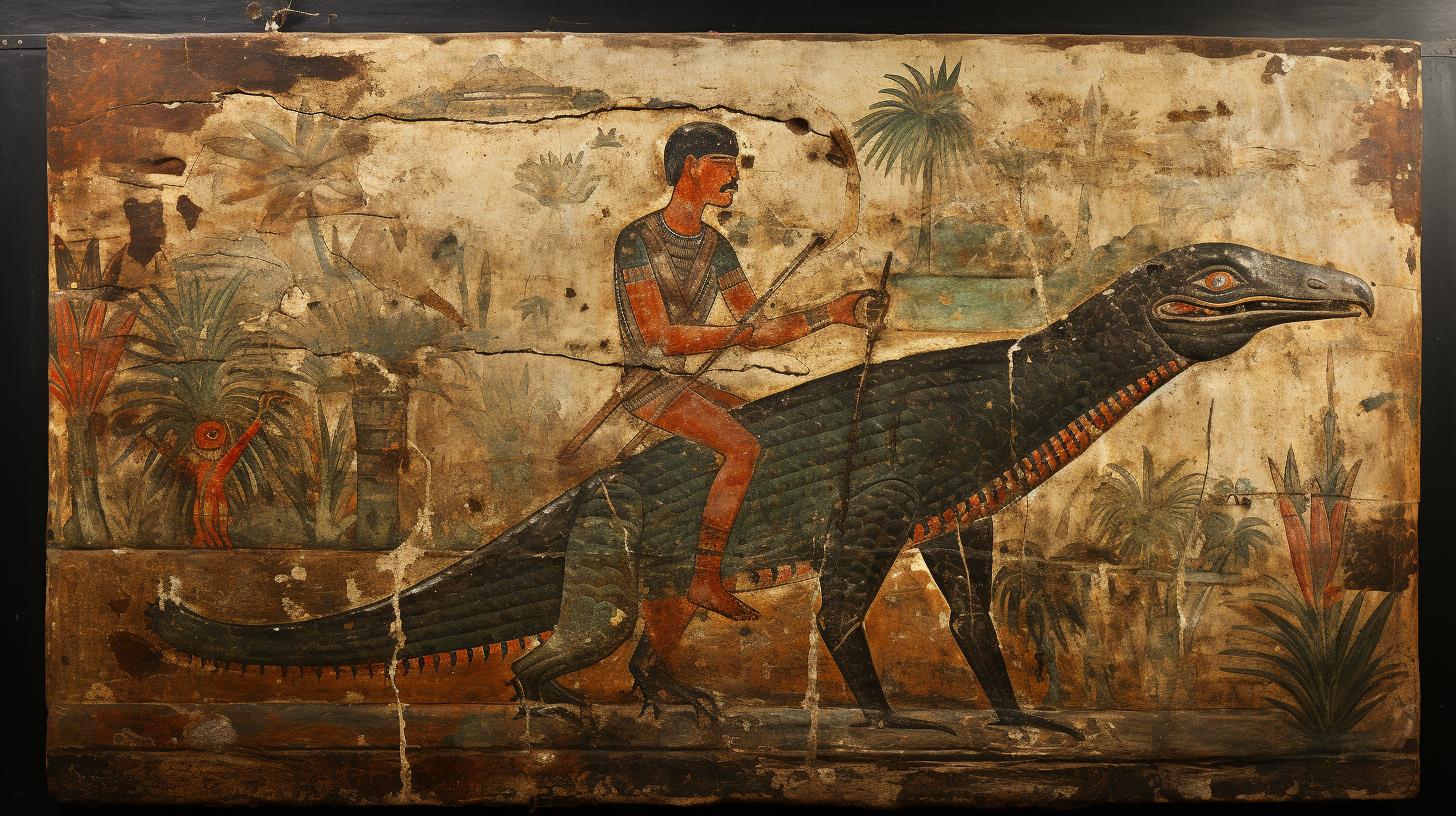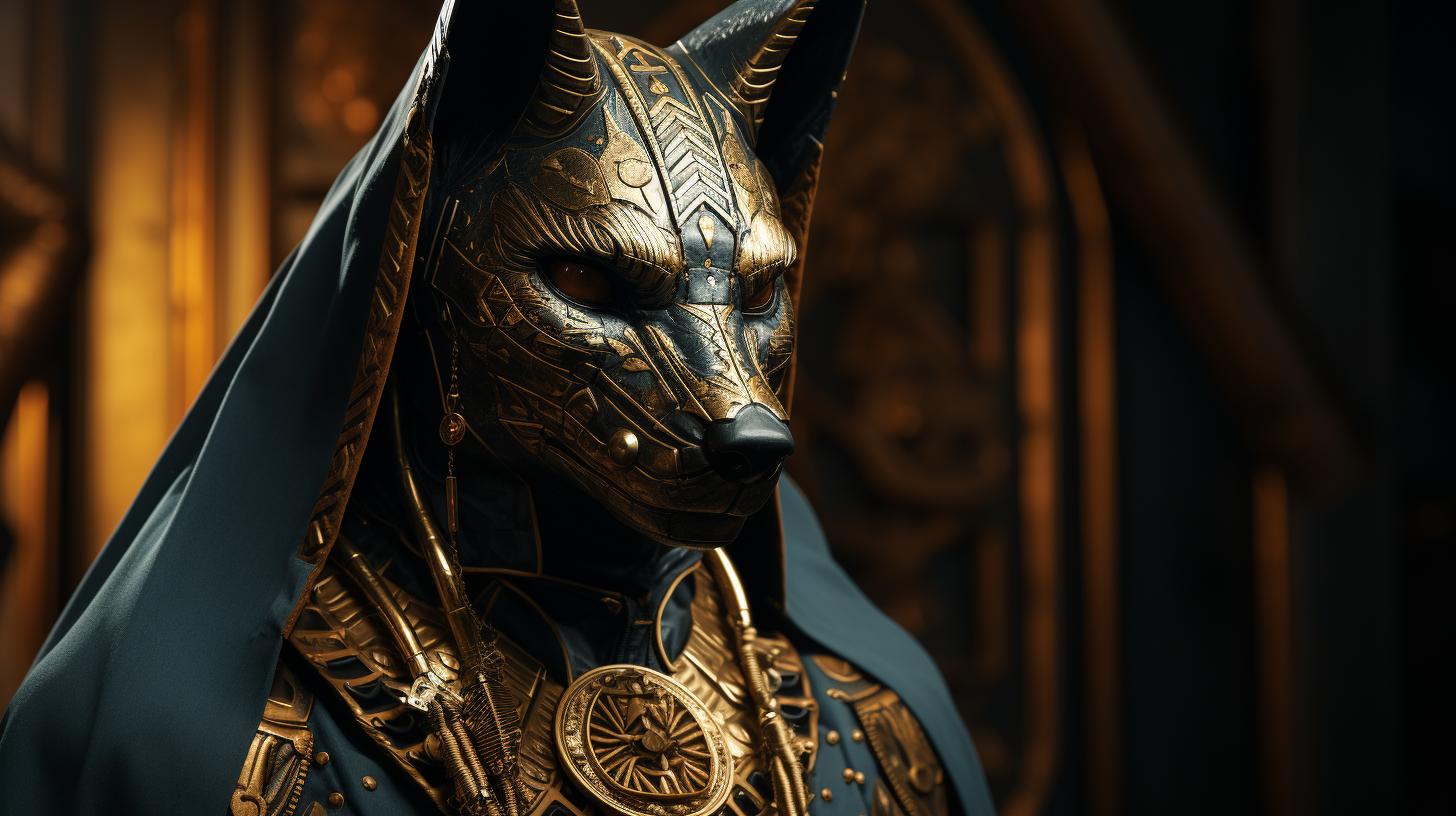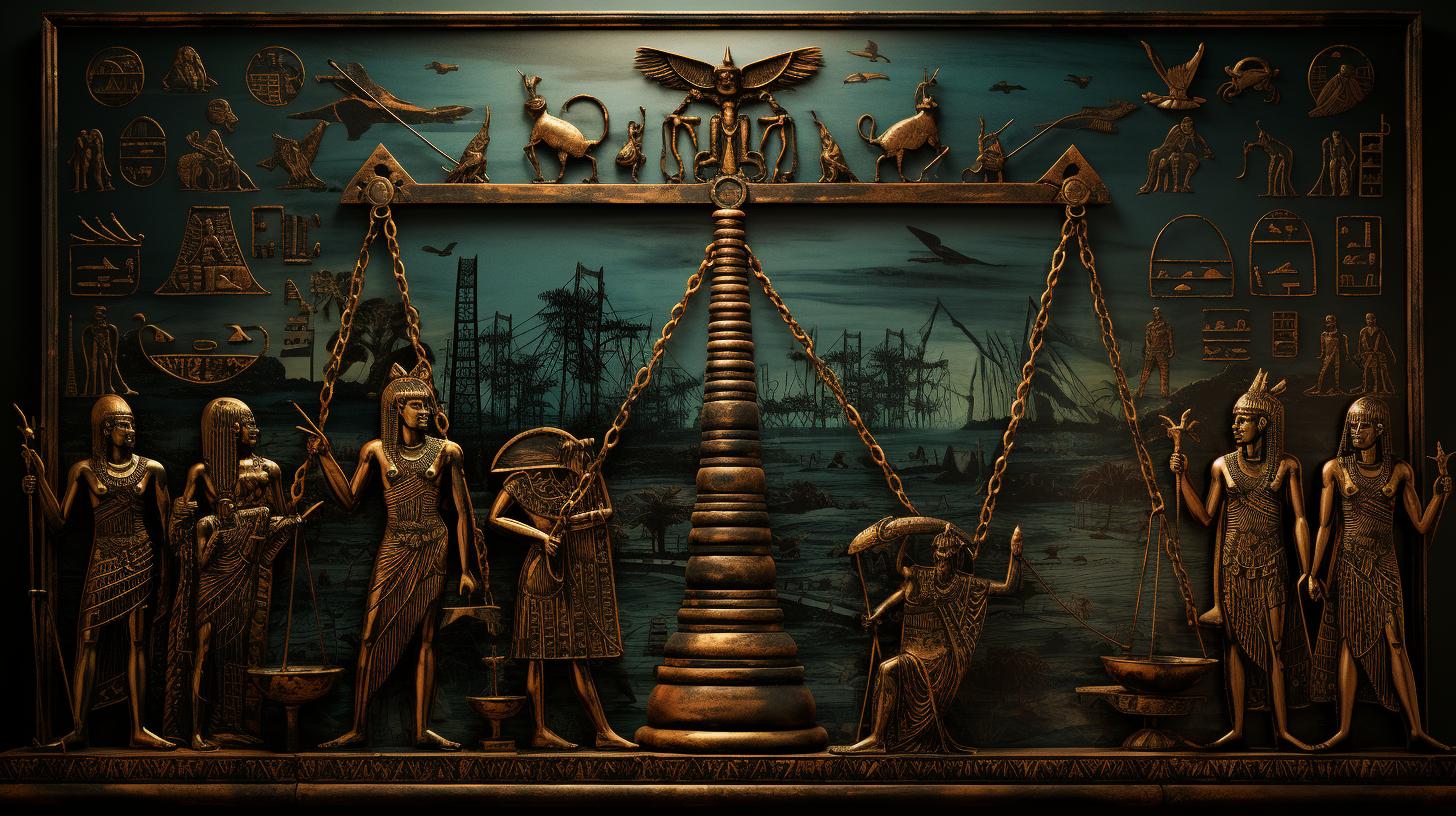The Egyptian God Ptah, God of the Craftmans
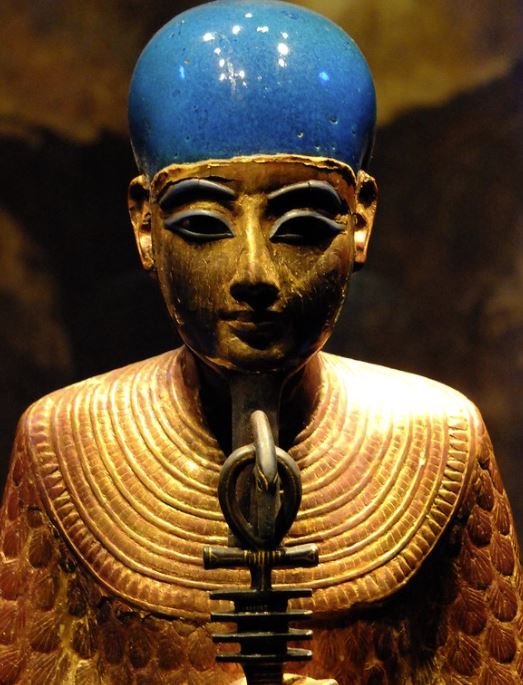
In the Egyptian pantheon, Ptah had the role of the creator, the divine crafter. He would have architected the world, imagining it in his heart and then making it real by the power of his tongue.
The Egyptian god Ptah would have also forged the kas, an important part of the souls of the other gods. This fact made him a primordial deity: he would have not been generated, but would have had an important role in the genesis of the other gods.
What is Ptah the god of?
The Egyptian god Ptah is considered the God of Craftmanship due to the fact that he was recognized as the architect of the world.
The Egyptian god Ptah represented in a statue
Egyptian god Ptah meaning: Origin of the Name
The name “Ptah” seems to have meant “the opener” in ancient Egyptian. This translation might be justified by the fact that the god Ptah played a fundamental role in one of the most important mortuary rites of the ancient Egyptian religion: the opening of the mouth.
Some important Egyptian god Ptah facts: Ptah and Sekhmet
The Egyptian god Ptah was originally worshipped in Memphis where he formed, together with his wife Sekhmet and his son Nefertem, the so-called Memphis triad.
Nefertem was a juvenile version of the primordial god Atum, who also had the role of the creator in other accounts; besides him, sometimes the Egyptian god Ptah was said to have fathered Imhotep, the legendary architect and cultural hero who would have designed the step pyramid of the pharaoh Djoser, and who was divinized at a certain point in Egypt’s history.
In ancient times, Memphis was the capital of Lower Egypt. When Lower and Upper Egypt were unified, Memphis became the capital of the entire country, and the cult of the Egyptian god Ptah, which until then had been confined within Memphis, was spread through all the kingdom, and even beyond.
In fact, it is known that the Egyptian god Ptah was widely venerated in the Eastern Mediterranean and that the Phoenicians had made him popular in Carthage, too, where the archaeologists have found numerous effigies attesting to his worship.
Ramesses II and the god Ptah
It is noteworthy that even the actual name “Egypt” comes from “Ptah”, as a consequence of the popularity he had gained.
When the Greeks came into contact with Egyptians, in fact, they heard of their capital Memphis and of a temple in it indicated by the epithet “temple of the soul of Ptah”; they translated this expression in their language as “Aigyptos”, the “-pt-” standing for “Ptah”, and referred it to the entire country Memphis was the capital of.
Egyptian god Ptah appearance
Due to his features, the Egyptian god Ptah was clearly considered to be the protector of craftsmen and architects.
He was often depicted as a bearded, partially mummified man with a green complexion, and was portrayed holding a sceptre where three different symbols, namely the was the ankh, and the djed, were combined.
A representation of the Egyptian god Ptah
History of the Egyptian god Ptah and Most Important Myths Related to Him
Though his immense importance, the Egyptian god Ptah does not appear in many accounts. Probably, one of the most important roles he had in Egyptian mythology is the one he plays in the Osiris myth.
In this myth, the god Ptah is said to have been among the deities who helped Osiris returning from the dead after having been killed by Set.
The Egyptian god Ptah was in fact credited with having performed on Osiris the rite of the opening of the mouth for the first time.
The Rite of the Opening of the Mouth
The opening of the mouth was a crucial rite in ancient Egyptian religion, because it allowed the dead to eat and drink, granting them survival.
Practically, the rite was performed passing some ritual tools, typically blades of different shapes, such as those of a fork, of a serpent, or of an adze, over the mouth of a statue or mummy, opening it in a symbolic way.
The rite would have been originated with the first mummy, the god of the Underworld Osiris. Once his wife Isis had reconstructed his body and given it life, Osiris would, in fact, have asked the Egyptian god Ptah to open his mouth, allowing him to keep feeding himself and breathing.
A representation of the head of the god Ptah
Ptah Egyptian god Powers
Due to his role of divine crafter, the god Ptah was obviously thought to possess incredible creative powers.
According to a common belief among ancient Egyptians, such power would have manifested itself by language: once imagined what he wanted to create, Ptah would have been able to make it real by simply pronouncing the right words and spells.
Symbols of the Egyptian god Ptah and Their Meanings
As we said in the introduction, the god Ptah was often associated with three of the most important among ancient Egyptian symbols, i.e. the was scepter, the ankh, and the djed. Let’s see their meaning in detail.
Ptah symbol: The Was
Having the form of a stylized animal head at the top and of a fork at the bottom, the was scepter is a symbol of power.
Associated with Set, the Egyptian god of Chaos, and with the so-called Set animal, in fact, the was scepter is thought to represent control over the forces of chaos.
Ptah symbol: The Ankh
One of the most famous symbols of ancient Egypt, the ankh, also called “the key of life”, was a hieroglyphic indicating life.
As such, it was attributed to many deities and pharaohs to symbolize their power to sustain life.
Ptah Egyptian god symbol: the Ankh
Ptah symbol: The Djed
The djed symbol had the appearance of a pillar. Therefore, it was often used to indicate stability.
Ptah Egyptian god symbol: the Djed
Additional Ptah Egyptian god Facts
Being associated with craftmanship, Ptah was clearly linked to the Greek god Hephaestus and to his Roman counterpart Vulcan.
It is interesting to note that there was another trait, too, connecting these three deities: all of them were associated with deformity and handicap.
Besides the iconography described in the introduction, in fact, the Egyptian god Ptah was often represented as a deformed dwarf.
Probably, for this reason, he was also considered to be the father of the pataikoi, who was a legendary race of dwarfed craftsmen. Since there seems to be no direct link between Ptah and Hephaestus or Vulcan, the fact that handicap and craftmanship were connected seems to indicate something interesting about ancient societies in general, and the way they were organized.
In fact, it can be inferred that among ancient people crafting was an activity reserved for people with some type of physical handicap, that made them unfit for military life, working in the field, or hunting.

